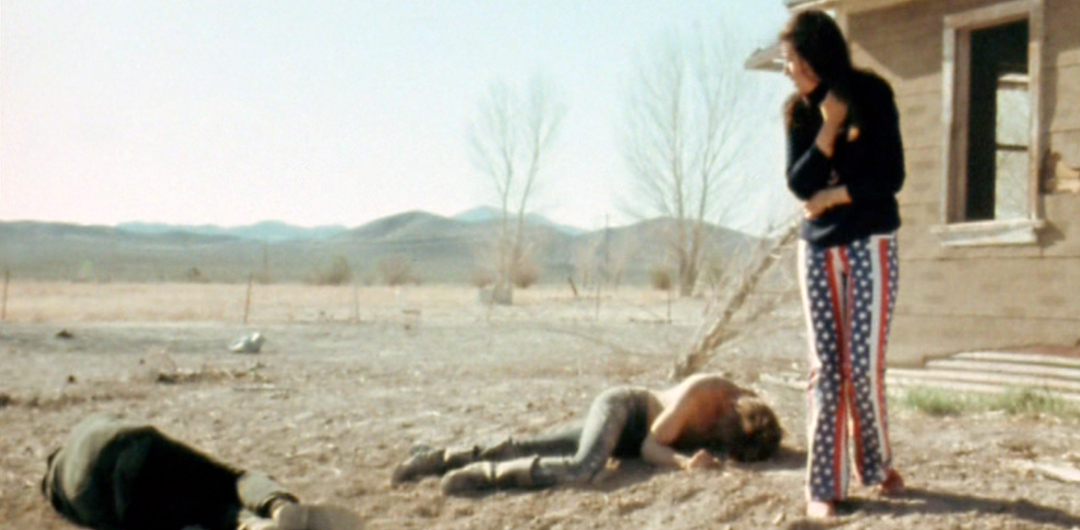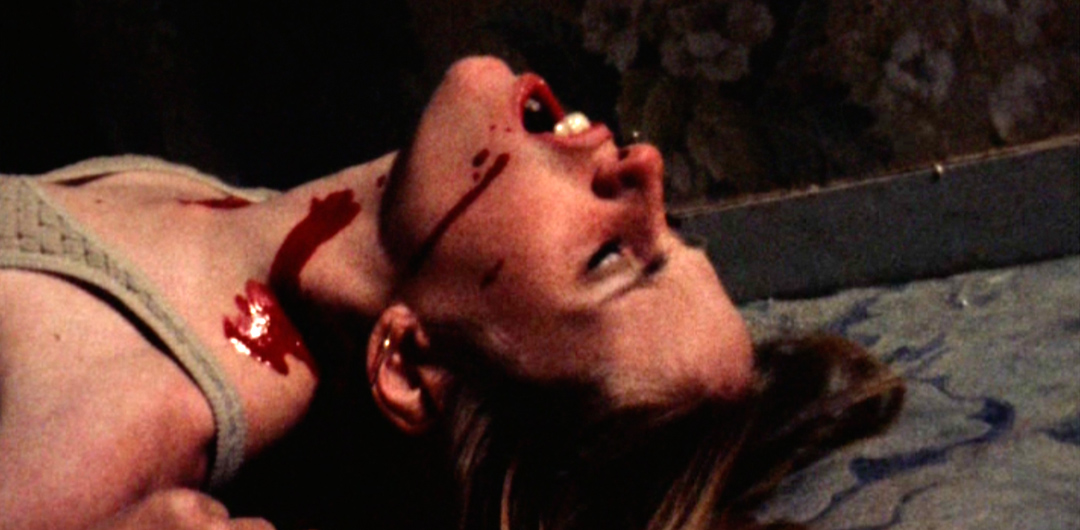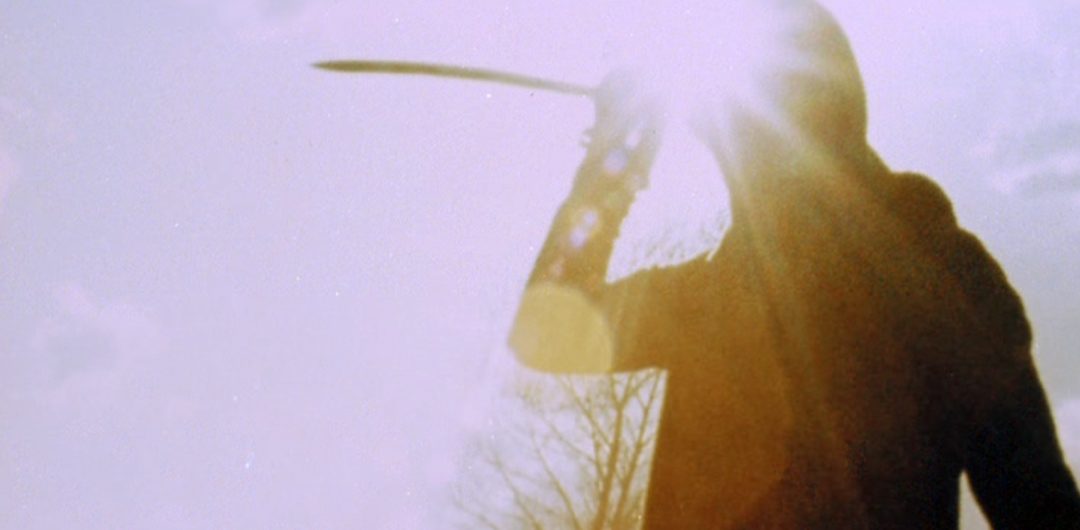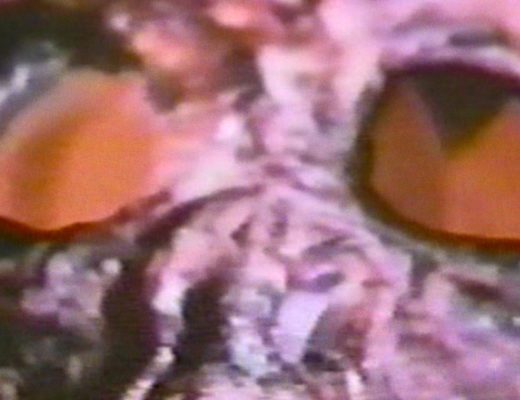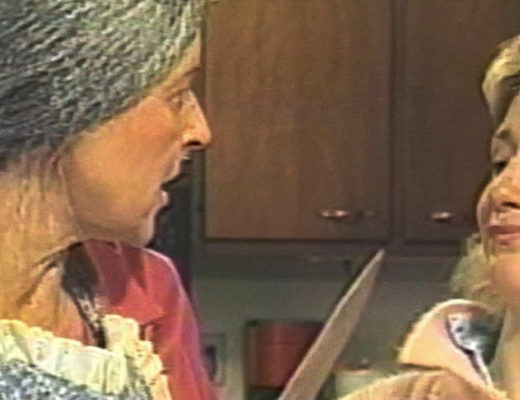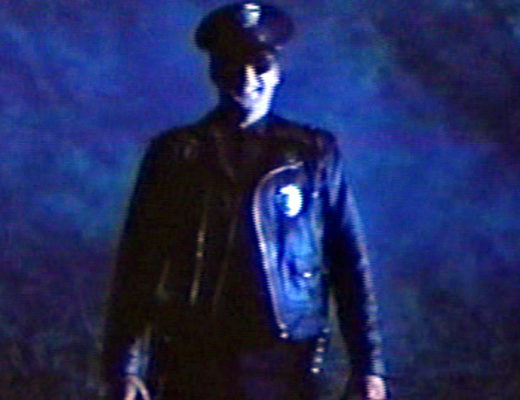There’s a scene in Blood Shack where late filmmaker Ray Dennis Steckler’s kids play musical chair. Yes, that’s “chair” and not “chairs.” Because there’s only one chair. This is a perfect parallel to Steckler’s work — do what you need to do in order to do what you need to do. No matter what.
Carolyn (played by Carolyn Brandt, Steckler’s then-spouse and co-producer) has inherited some land in the middle of the desert. When she arrives, caretaker Daniel wears a half-shirt and informs Carolyn that a shack on the premises is haunted by the The Chooper. THE CHOOPER! He’s a sword-wielding maniac that wears a black bodysuit and screams like the Incredible Hulk while attacking people. Meanwhile, Tim Foster (Ron Haydock, ultra-talented smut novelist, lo-fi rocker, and star of Steckler’s earlier Rat Pfink a Boo Boo) wants to buy Carolyn’s land. But she’s not selling. We visit the rodeo, watch cars drive around, and see Carolyn’s kids adopt a pony. Daniel and Tim duke it out over Carolyn’s affections. Eventually, The Chooper jumps off a roof, kills a cop, and drives away in his car.
Ray Dennis Steckler spent the 1960s creating hyperactive, dream-like home movies that felt like living comic books from the heart of a monster-obsessed teenager. Whether he was directing genre milestones like The Incredibly Strange Creatures… or photographing exploitation rippers like Scream of the Butterfly, Steckler always left his electric mark on whatever project he was involved with. But by the late 1960s, work had dried up. His movies weren’t selling. Steckler and Brandt had kids to feed and a life to live. Fed up with Hollywood, they made Las Vegas their new home in 1969. And that’s when things got wild.
Blood Shack is one of the first movies that Steckler and Brandt made after their move to Las Vegas. It’s also a magic carpet ride to a new plane of Steckler’s subconscious. Shot for $500 and barely released theatrically in a 70-minute version titled The Chooper, the movie was cut down to 55 minutes for home video, rescored, and retitled Blood Shack. Those are the facts. With those out of the way, we’re free to join this movie in disassociating ourselves from real life.
Around the midpoint of Blood Shack, Brandt takes a somnambulistic midnight stroll. The wind whips her hair. The moonlight catches her eyes. The dark blue sky outlines her path. It’s poetic, chilling, and beautiful, like the climax from I Walked With a Zombie combined with the artsy minimalism of Roberta Findlay’s A Woman’s Torment. This scene is at odds with the rest of the movie, which jams together mundane narration, ill-fitting music cues, and The Chooper’s baffling attack scenes. But that’s why I love it. From The Mad Love Life of a Hot Vampire to Las Vegas Serial Killer, movies from Steckler’s twilight years are scattered and unintentionally avant-garde — you never know what to expect from minute to minute. With its focus on barren desert vistas and stream-of-consciousness plotting, Blood Shack is totally unconventional and thoroughly strange. In other words, it’s just one more reason why the work of Ray Dennis Steckler should never be forgotten.
The last line of dialogue in the movie is heard through Carolyn Brandt’s narration:
“I don’t know what i’m going to do. I guess I’ll just worry about it tomorrow . . . if tomorrow ever comes.”
I never thought that a movie called Blood Shack could make me feel so good.
